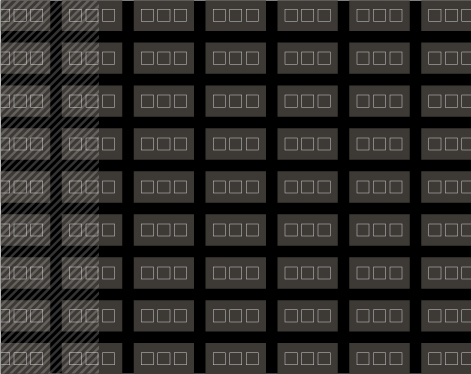Simple saves you money. Why Yondr champions simplicity in engineering
By: David Eames

Easing the smooth, silver surface out of its snug cardboard container, you carefully place it on your desk. Unwrapping the bright white cable you fleetingly promise to always keep clean, you’re plugging it into the power, and then into your machine. And it’s on.
Booting up a computer is as simple as plug and play. Why can’t data centers be that way? They can when simplicity is the philosophy of choice.
Why complexity persists
Engineers love complexity. They expect it and even seek it out because that’s what university teaches you. The more difficult a maths equation, the more important it is.
Enter the real world, and you quickly realise those equations are of little use and when you do hark back to your education, no one understands you.
That’s the problem with complexity. It elevates things until they become indigestible; inaccessible to the masses.
In a data center, inaccessibility means risk. Even by itself, complexity increases the chance of human error. Combined with a live environment circulating thousands of megawatts of power, a remote location with little surrounding infrastructure and limited local expertise, it becomes a disaster waiting to happen. And Yondr doesn’t deal in disasters.
Protecting our clients’ uptime, reputation and data is our raison d’etre. That’s why our engineers make the hard stuff easy. Reducing things to their absolute essentials, rejecting fancy words and convoluted explanations (traits that, in some circles, make you look good) in favour of discussions everyone understands.
It also helps me remember things. I’m hopelessly forgetful, so if nothing else simplicity tempers my tendency to forget.
I’ll explain how Yondr delivers simplicity in a moment. But first, let’s look at what complexity costs you.
Complexity reduces your talent pool – and makes it expensive
One of the most popular bikes in India is the Royal Enfield Bullet. It was first manufactured in 1932, and while technology has come a long way since then, the mechanical simplicity of this machine remains and makes it a firm national favourite.
Why? Because when you’re stuck in difficult terrain, without anyone to help you, solving a simple mechanical problem is much easier than a complicated electrical fault.
Keeping things simple enables more people to understand and resolve a problem. Complicated challenges are discriminative; the circle of people who can find a solution is much smaller.
Highly skilled data center staff are increasingly rare, and we often operate in areas where those skills don’t yet exist. Enabling a wider pool of people to work on a project is paramount. We harness simplicity because it’s democratic.
Complexity costs your more than cash
Solutions that are hard to understand are hard to execute. Projects grow longer when they’re complicated, tallying time, energy and additional manpower.
That threatens your go-live date, your carbon neutral commitments and your health and safety promises; in an already constrained live environment, you don’t want more people on the ground than necessary.
Complexity costs you time
2020’s pandemic has shown how quickly needs can change. Suddenly, huge swathes of people were working from home, spending more time online. Data center capacity requirements increased tenfold.
Here, complexity slows you down. Simplicity supports the growing demand on data because it’s faster to upskill a simple supply chain than a convoluted, disjointed one.
Difficulty can be lost in translation
It’s challenging to integrate and brief a team when the job at hand is difficult to grasp.
Add cross-cultural differences into the mix and the effect is compound. Simplicity translates well across culture, location and linguistic capabilities. Which makes it easy to do your job, adhere to health and safety measures, protect yourself and fellow staff.
Championing simplicity at Yondr
From laptops to Royal Enfield Bullets, I’m now going to take you to Lego. My final analogy.
One of the ways Yondr has embraced simplicity is to prefabricate data center components offsite, deconstructing the complex infrastructure into Lego blocks in controlled expert locations, ready to be assembled.
Operating in a remote, resource-constrained environment, we knew onsite delivery needed a simple format.
So we removed the complexity from the local area and gave it to the complexity experts in alternative factory locations. Working to a modular design, components were then delivered in Lego-like blocks that could easily be reassembled on site.
The effect was a building site where blocks are simply fitted together, reducing time, complexity and cost.
Imagine a future where these blocks reside in crucial locations around the globe, ready for deployment at a moment’s notice. Each block talking to the other through a single connection when it’s carefully slotted into place. Simplicity and speed at your fingertips.
For most people, buying a laptop is less about the deep tech spec and more about usability: will it do what I need it to do? We expect it to come with high-end security, shelf-life and durability. But the ‘how’ behind those assurances? We trust the experts to have done their job.
We deliver this level of simplicity for our clients. You shouldn’t have to wrap your head around an engineer’s love of complexity. Just wheel in your racks.



